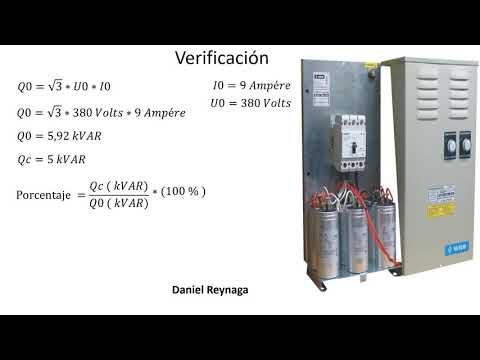Low Power Factor Penalty Formula: How to Calculate and Avoid Penalties
In the field of electrical energy, power factor is a fundamental factor that determines the efficiency and performance of electrical installations. A low power factor can not only affect the quality of the power supplied, but also result in significant financial penalties. In this article, we will explore the low power factor penalty formula, its calculation, and how to avoid these penalties. If you are interested in optimizing your energy consumption and avoiding unnecessary expenses, read on to discover everything you need to know.
How power factor is penalized
How power factor is penalized
Power factor is a fundamental concept in the field of electricity, since it indicates the efficiency with which an electrical installation uses the supplied energy. A low power factor implies that some of the energy is lost as heat and is not used efficiently. Consequently, electricity companies penalize those consumers who have a power factor lower than that established by current regulations.
The low power factor penalty formula is used to calculate the financial penalties applied to consumers who do not meet minimum energy efficiency requirements. This formula takes into account various parameters, such as reactive energy consumption and active power, to determine the penalty value.
To calculate the penalty for low power factor, different rates established by electricity companies are used, which vary depending on the type of supply and the level of contracted power. These rates are applied to the difference between the actual power factor and the minimum required power factor.
It is important to note that there are different ways to avoid penalties for low power factor. One of them is the installation of power factor correction devices, such as capacitors, which make it possible to compensate for reactive energy and improve the energy efficiency of the installation. In addition, it is essential to carry out good sizing of electrical equipment and adequate maintenance to avoid energy losses and optimize its use.
What happens if the power factor is too low
What happens if the power factor is too low
Power factor is a measure of efficiency in electrical systems. It indicates how well electrical energy is being used in a system. A low power factor can have several negative effects on an electrical system.
One of the main problems of a low power factor is the increase in current flowing through electrical installations. This means that a larger size of conductors and equipment will be needed, which translates into higher installation and operating costs.
Another negative effect of low power factor is that it causes a decrease in the ability of the electrical grid to supply power. This can result in overloads on transformers and generators, which can lead to power failures.
Additionally, a low power factor can also cause an increase in energy losses in the system. This is because reactive energy, which is not used efficiently, is converted to heat and dissipated in electrical conductors and equipment. This results in wasted energy and increased operating costs.
It is important to note that a low power factor can also have economic consequences. Some electricity companies apply a penalty formula for low power factor, which implies an additional cost on the electricity bill.
Low Power Factor Penalty Formula: How to Calculate and Avoid Penalties
Calculating the penalty for low power factor is important to avoid additional costs on the electricity bill. The underpower factor penalty formula can vary depending on the power company and local regulations, but is generally calculated by multiplying the exceeded reactive power by a specific penalty factor.
To avoid penalties for low power factor, it is advisable to take measures to improve the power factor in the electrical system. Some of the actions that can be taken include:
- Install power capacitors to compensate for reactive energy and improve power factor.
- Perform electrical load analysis and adjustment to reduce energy
How kVAr is calculated
Low Power Factor Penalty Formula: How to Calculate and Avoid Penalties
Power factor is a measure of the energy efficiency of an electrical system. A low power factor indicates misuse of electrical energy and can result in financial penalties from electrical companies. In this article, we will explain how kVAr, one of the main units used to determine power factor, is calculated.
The kVAr, or kilovoltampere reactive, is a measure of the reactive power of an electrical system. Reactive power is power that does not perform useful work, but is used to maintain the efficiency of the system. It is measured in volt-ampere reactive (VAR) and is used to calculate power factor.
The formula to calculate kVAr is the following:
kVAr = kVA * sin(θ)
Where kVA is the apparent power and θ is the phase angle between current and voltage. The phase angle is calculated using the cosine of the power factor (PF).
The power factor is calculated using the following formula:
FP = cos(θ) = P / S
Where P is the active power and S is the apparent power. Active power is the power that does useful work, while apparent power is the vector sum of active power and reactive power.
It is important to have a power factor close to 1, since a low power factor implies higher energy consumption and higher cost for the user. To avoid economic penalties, it is necessary to take measures to correct the power factor, such as installing capacitor banks or using more efficient equipment.
So there you have it! The low power factor penalty formula revealed. Now that you know how to calculate it and how to avoid those dreaded penalties, you can become the hero of energy efficiency! So go ahead, put your knowledge into practice and make sure your power factor never falls into the abyss of penalties!




Post Comment